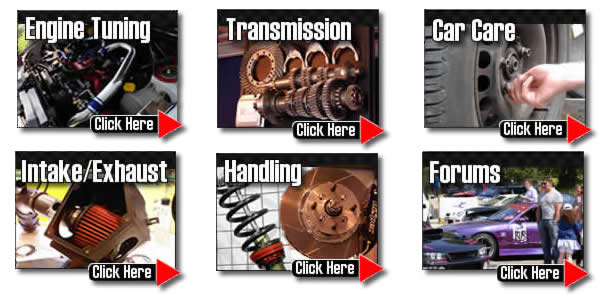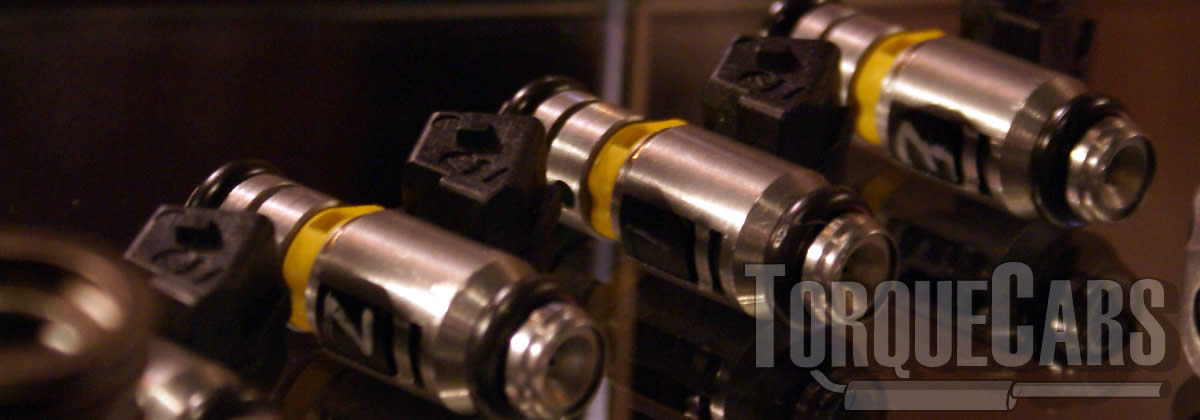Discover "C20NE Modifications"
How to modify and upgrade the Vauxhall C20NE
"Comprehensive guide to performance tuning the Vauxhall C20NE engine!"
Sites like TorqueCars are frequently getting emails about how to improve the C20NE from people wanting to know what are the things tuners are recommending when it comes to C20NE mods that work. So let us look into Vauxhall C20NE modifications and outline the best modifications on this great engine and point out some frequent tuning mistakes along the way.
Therefore we outline options for your C20NE tuning and show the ultimate mods that work. Vauxhall C20NE offer good returns when tuned and with the optimum motorsport upgrades like remaps, turbo upgrades and camshafts you will really increase your driving pleasure.
Just because particular upgrades are popular with C20NE owners it doesn't mean its worth having, we shall focus on the ultimate upgrades that will give your C20NE the best value for money to power increase.
Without us subscribing to the misaprehension of 'if it's shiny and makes more noise it must be good' you seem to get in many tuning magazines and on car forums'.

Improving air intake on the C20NE
You need fuel and air for an engine to work. If there is not enough fuel then it will run lean, if there is a lack of air it runs rich losing power which risks damage to the C20NE. We'll pick up on fuelling later in this article but for now we shall look at air supply.
So Feeding air into each cylinder is the primary aim to any engine performance tuning job.
It is not unusual that there's a limit in the air flow sensor AFM/MAP on the C20NE when considerably more air is being fed into the engine.
When tuning you may well find you need to get an air sensor or flow meter capable of upto 4 bars to cope with quite large power gains, whereas the OEM air sensor limited power at a much lower level.
Intake headers carry the air from the air cleaner and allow it to be pulled into the engine cylinders.
Shape and flow characteristics of the Plenum can make a substantial change to fuel atomisation on the C20NE.
We often see plenum chambers are ripe for a performance upgrade, although some car makers provide fairly well optimized plenum chambers.
Fitting big valve kits, doing some C20NE port enlargement and head flowing will also increase power, this will allow you to get an improved power increase on other parts.
C20NE performance cam tips.
Some C20NE engines respond better to more aggressive camshaft durations so view each engine as unique.
The engine timing and injectors and fuel pump also will make differences on the power gains you'll achieve.
A longer valve duration can alter the power band and on most engines the exhaust and intake durations do not need to match, although most cams and tuners use matched pairs there are some advantages to extending the intake or exhaust durations.

The camshaft profile plays a big part in the engines power output so camshaft upgrades make quite a large difference. The intake and exhaust durations will alter depending on the chosen camshaft profile, so large torque gains are on offer for camshaft upgrades.
NB: Fast road cams tend to boost the torque over the rev band, you may lose a little bottom end torque but your higher rpm power will be better.
Competition cams, boost the higher rpm power band but as a result the car will not idle smoothly and low end power nearly always suffers.
For a car driven daily you need to optimize your bhp range to your usage of the car.
You will never have ever thought a C20NE Motorsport and race camshaft is a pleasure to live with when driving around busy urban areas.
Stage 1, 2 and 3 mods for the C20NE
Before we break the best tuning upgrades down into stages of tune, let's list the most effective tuning upgrades for you.
- Suspension Upgrades - always improve your cars handling
- Brake Upgrades - Even before adding power improve those brakes
- Intake - make sure the intake is not restricted, use filters and intake upgrades to improve this
- Exhaust - as with 3 ensure there is not restriction in the exhaust, cats are the usual bottleneck
- Tunes - remapping, piggyback ECU's and aftermarket ECU's can all make decent gains
- Fuelling - when you've increased power you'll need to match this with more fuel
- Turbo upgrades - Improving the intake with a large turbo and better flowing intercooler will be the biggest power gain you'll see (but one of the most complex).
This video guide to tuning cars is a great starting point to work from in your project.
Stage 1 C20NE parts:
Fast road camshaft, Panel air filters, Sports exhaust manifold, Intake headers, Remaps/piggy back ECU, Drilled & smoothed airbox.

Stage 2 C20NE parts:
Fast road cam, fuel pump upgrades, high flow fuel injectors, induction kit, Sports catalyst & performance exhaust, Ported and polished head.
Stage 3 C20NE parts:
Adding or Upgrading forced induction (turbo/supercharger), Competition cam, Internal engine upgrades (head flowing porting/bigger valves), Crank and Piston upgrades to alter compression, Twin charging conversions, Engine balancing & blueprinting.
Remaps helps fully realize the full potential of all the upgrades you've done to your C20NE.
You will typically expect to see gains of approximately 20-30% more power on turbocharged vehicles and you can expect to see around 15% on NASP engines, but your results often differs on the upgrades you've fitted and the condition of your engine.
Turbo modifications on the C20NE

To get a turbo working on a NASP engine there is a lot involved, from lowering compression ratio to improved fuel supply and mapping, so we have found a great guide to helpavoid the common pitfalls or end up with an unfinished project because you were not told what you were getting into by doing this on the C20NE.
The more air you can get into an engine, the more fuel it can burn and uprating the induction with a turbocharger upgrade makes massive power gains.
If the engine is turbocharged, tuning mods are going to make more power and most turbocharged engines will have many forged and stronger components.
However every engines will have power limits
Research these limitations and upgrade to better quality crank and pistons to cope with the power.
It's not unheard of mechanics spending a loads on turbo charger upgrades on the C20NE only to experience the car catastrophically fail just after it's first rolling road session.
Larger turbochargers will usually suffer a bottom end lag, and low capacity turbochargers spool up much more quickly but won't have the top end power band gains.
Thankfully the choice of turbo units is always moving on and we are seeing variable vane turbo units, permitting the vane angle is altered according to speed to lower lag and increase top end bhp.
Twin scroll turbo units divert the exhaust gases into a couple of channels and flow these at differently designed vanes in the turbo. They also boost the scavenging effect of the engine.
Beefing up the air intake by adding a supercharger or additional turbo will help you achieve very large bhp gains, although harder to configure. We have this feature on twinchargers if you want to read more.
Tips about fuel supply on the C20NE
When you improve the performance you will need to pay attention to to the fuel system.
More performance needs more fuel.  Don't forget to be generous with your injectors flow rate.
Don't forget to be generous with your injectors flow rate.
As a rule of thumb add another 15% when fitting an injector, helps cope with injector deterioration and allows a bit of spare capacity should the engine need more fuel.
Don't forget that different fuel grades will usually require different settings, a high octane fuel will burn more efficiently than lower octane fuel for example. A car will trim fuel supply to keep within the ideal air fuel mix but at the extreme ends you may need to adjust your injector capacity, or the mapping or you'll get flat spots and potential lean or rich fuel issues..
Recommended C20NE performance exhaust upgrades
The only time you should look to boost your exhaust system with an upgraded one is if the existing exhaust is actually creating a restriction in flow.
On most factory exhausts you'll find your flow rate is still good even on modest power gains, but on a serious tuning project with a big boost in power you will certainly need to get a better flowing exhaust.
Sports exhausts equal out the flow of air through the engine.
But if your exhaust pipe is too large, ie: over two and a half inches diameter, you will lose much of the flow rate and end up lacking power and torque.
Typically exhaust restrictions are traced to the catalysts installed, so adding a faster flowing performance alternative will help avoid this restriction.
Decatting (NB:catalysts reduce harmful engine emissions) is illegal in most countries and regions.
Faults issues and things to look out for on the C20NE
Like most engines an C20NE, should have few issues if it gets properly serviced and looked after.
We cannot stress enough the need for oil changes with the correct grade of oil on the C20NE, failure to do this will exacerbate engine wear, on a tuned C20NE this is more important than ever and close attention should be paid to your maintenance schedule.
If you are interested in learning more or getting impartial tuning advice for your C20NE why not pop over to the forums at TorqueCars where you can chat about C20NE tuning options and read about others projects who may be planning to do similar modifications on their C20NE.
We need your help to complete and improve this page, so do give us your feedback in the comments box below.
We want to know your experiences with mods on your C20NE, it helps us improve our tips and keeps us current so please use the comments box to drop a tip.
If you liked this page please share it with your friends, drop a link to it in your favourite forum or use the bookmarking options to save it to your social media profile.
Check out TorqueCars new YouTube channel, and see their awesome new content...
Feedback
Please use our forums if you wish to ask a tuning question, and please note we do not sell parts or services, we are just an online magazine.
Help us improve, leave a suggestion or tip
